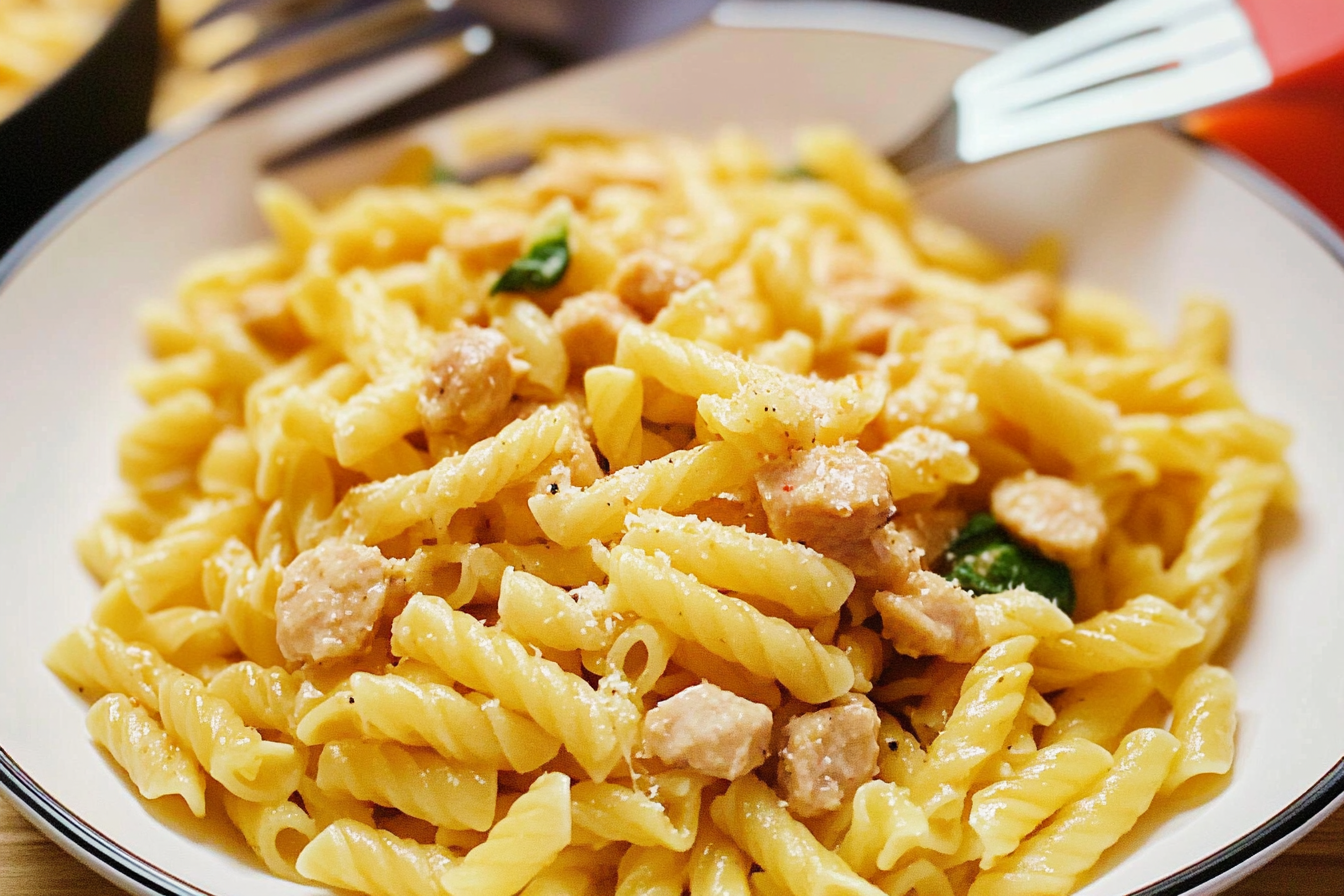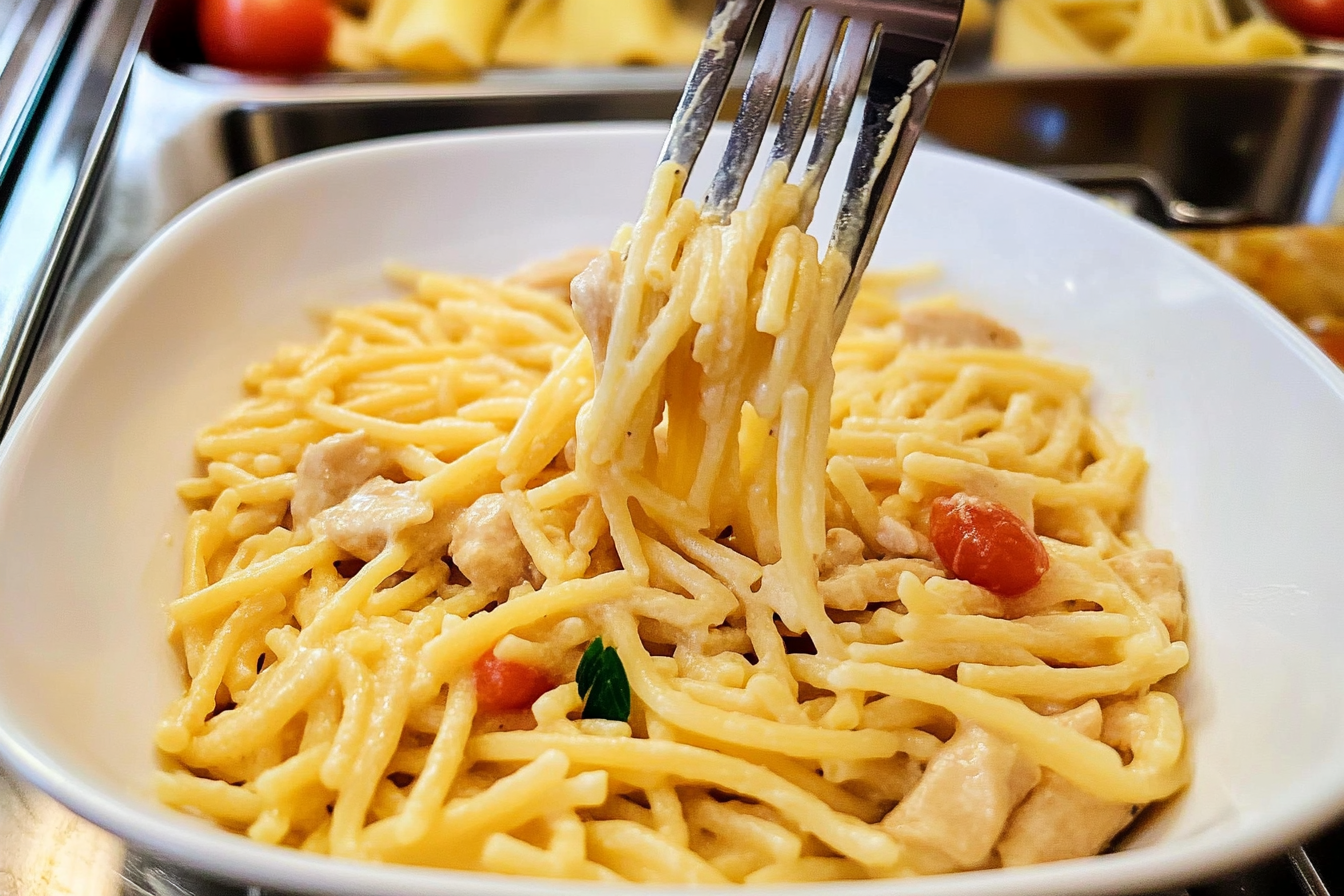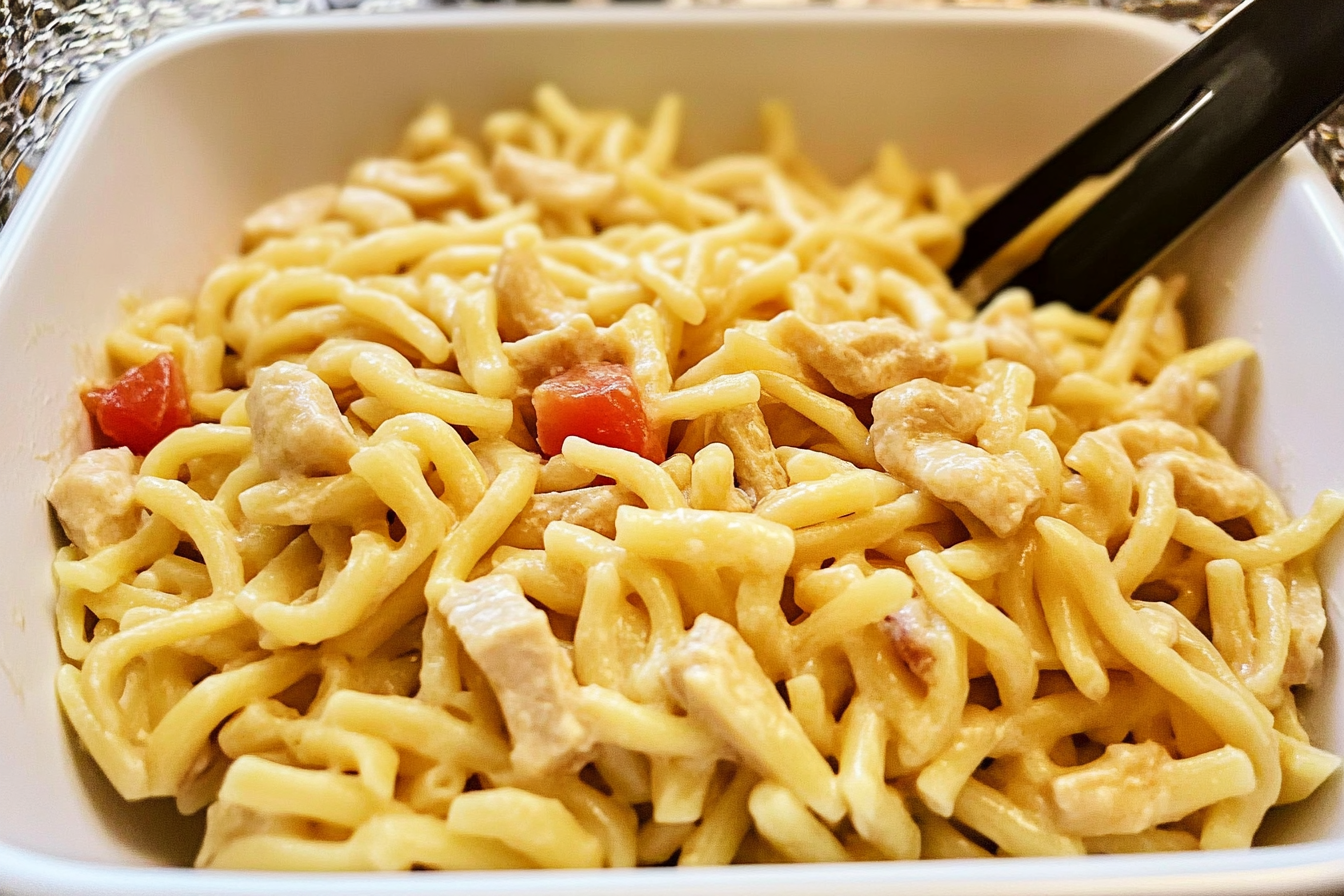Strozzapreti is a unique and well-loved pasta that comes from the regions of Emilia-Romagna and Tuscany in Italy. Its name, which literally means “priest strangler,” gives it a fascinating story in Italian culinary history. Known for its hand-rolled, twisted shape, strozzapreti is often used in dishes that call for thick sauces such as ragu, creamy tomato-based varieties, and even pesto. But what if you don’t have strozzapreti? Are there other types of pasta that can deliver similar results in terms of taste and texture?
This in-depth guide explores some of the best alternatives to strozzapreti. We’ll discuss their similarities and differences, how they pair with sauces, and offer insights into their culinary versatility. Additionally, we’ll provide answers to common questions about strozzapreti and its substitutes, so you can make informed choices in the kitchen.
What Makes Strozzapreti Special?
A Glimpse Into Strozzapreti’s History
Strozzapreti has a deep-rooted history in Italian cuisine, especially in the regions of Emilia-Romagna and Tuscany. The pasta’s name, “priest strangler,” comes from an old legend. It’s said that priests loved this pasta so much that they ate it too quickly, which made them choke. While the story may not be true, it adds to the charm and tradition surrounding strozzapreti.
The pasta is typically hand-rolled, giving each piece a unique, slightly twisted appearance. This method makes it stand out from machine-made pasta, which tends to be more uniform. Because it is handmade, strozzapreti’s texture is rough, allowing it to hold onto sauces effectively. Traditionally, it’s served with thick, hearty sauces, making it ideal for absorbing rich flavors. Strozzapreti has a unique history among Italian pasta varieties. For a comprehensive look at various pasta types, check out this list of pasta on Wikipedia.
For more information about the history of strozzapreti, you can explore our detailed guide on Italian pasta traditions.
Why Strozzapreti Stands Out
Strozzapreti has gained popularity not just for its history, but also because of its shape and texture. Its slightly twisted, hand-rolled form creates an uneven surface, which helps sauces cling to it better. As a result, strozzapreti is perfect for dishes with chunky sauces, such as ragus or creamy cheese sauces. Compared to smoother pastas, it delivers a more satisfying bite and flavor combination.
While strozzapreti is perfect for rich, hearty sauces, its versatility shines through in different culinary contexts. You can use it in:
- Meaty ragus: Rich, slow-cooked meat sauces like beef or pork ragu.
- Creamy sauces: Cheesy Alfredo and four-cheese sauces.
- Pesto: Basil-based pesto or Sicilian variations made with tomatoes.
However, if you find yourself without strozzapreti, don’t worry. Many other pasta shapes can offer similar results in both texture and sauce absorption.
The Best Pasta Substitutes for Strozzapreti
If you don’t have strozzapreti available, several pasta varieties can step in as excellent substitutes. Below are the top alternatives, along with some tips on how to use them.
1. Casarecce
Casarecce is a traditional pasta from Sicily, and it’s one of the closest alternatives to strozzapreti. Like strozzapreti, casarecce has a twisted, hand-rolled shape, though it tends to be longer and more tubular. The texture of casarecce makes it perfect for holding onto rich sauces, similar to strozzapreti. Whether you’re preparing a tomato-based sauce or a rich ragu, casarecce will work just as well.
- Shape: Twisted, tubular pasta, slightly longer than strozzapreti.
- Best Sauces: Sicilian pesto, meaty ragus, and hearty tomato sauces.
Casarecce’s versatility doesn’t stop there. You can explore more recipes featuring this pasta in our article about cavatappi and its alternatives.
2. Cavatelli
Another fantastic substitute for strozzapreti is cavatelli. This pasta, often called “little hollows,” comes from Southern Italy and is commonly paired with vegetable ragus and seafood. Cavatelli has ridges and a slightly denser texture, making it ideal for soaking up thick sauces. Although it’s smaller than strozzapreti, cavatelli’s shape works just as well in many of the same dishes.
- Shape: Small, ridged, hollow pasta.
- Best Sauces: Tomato-based sauces, vegetable ragus, seafood-based sauces.
You can learn more about cavatelli and other short pasta varieties in our capellini guide, where we discuss its uses and sauce pairings in more detail.
3. Fusilli
Fusilli is another excellent alternative for strozzapreti. Its spiral or corkscrew shape holds onto sauces just like strozzapreti does, making it a great match for pesto, meaty sauces, and even lighter tomato-based options. Although fusilli is typically longer, its coiled structure traps sauces between its spirals, ensuring that every bite is flavorful.
- Shape: Spiral or corkscrew pasta.
- Best Sauces: Pesto, chunky meat sauces, creamy tomato sauces.
For a delightful recipe featuring fusilli, check out our Blackened Chicken Alfredo, which highlights how fusilli can pair wonderfully with a creamy sauce.
4. Pici
If you’re looking for a more rustic pasta, Pici is an excellent choice. Like strozzapreti, pici is hand-rolled, but it’s much thicker and longer. This Tuscan pasta is traditionally served with rich meat sauces, making it perfect for absorbing intense flavors. Although pici differs from strozzapreti in length, its dense texture ensures that it will hold sauces similarly.
- Shape: Long, thick, hand-rolled pasta.
- Best Sauces: Meat-based ragus, garlic sauces, and thick tomato sauces.
Pici is less common in stores but relatively easy to make by hand. With just a few ingredients, you can recreate this traditional pasta and enjoy an authentic Italian meal at home.
5. Busiate
Originating from Sicily, Busiate is a tightly twisted pasta that resembles strozzapreti. Although it’s thinner and more uniform, busiate performs similarly in dishes with rich, chunky sauces. It’s particularly popular in Sicilian cuisine, often paired with pesto alla trapanese, which features tomatoes and almonds.
- Shape: Thin, tightly twisted spirals.
- Best Sauces: Sicilian pesto, seafood-based sauces, tomato-based ragus.
Busiate works beautifully with both tomato-based and pesto sauces. If you’re craving authentic Sicilian flavors, busiate is an excellent option.
6. Trofie
Trofie is another excellent substitute for strozzapreti. Like strozzapreti, artisans hand-roll trofie, giving it a slightly dense and irregular texture. This pasta is particularly common in Liguria, where cooks traditionally pair it with pesto Genovese. Trofie’s short, twisted shape makes it a great option for thick sauces that require a pasta capable of holding onto every bit of flavor.
- Shape: Short, twisted pasta.
- Best Sauces: Pesto Genovese, garlic-based sauces, vegetable-based sauces.
While trofie may not be as widely available as fusilli or casarecce, it is worth seeking out if you want an authentic taste of Ligurian cuisine.
Sauce Pairing Tips for Strozzapreti and Substitutes
Choosing the right sauce can take your pasta dish from good to great. Let’s look at some classic sauces that pair well with strozzapreti and its alternatives.
Meaty Sauces
- Ragu: A slow-cooked meat sauce, ragu is one of the most beloved Italian pasta sauces. Strozzapreti, casarecce, and fusilli all hold up well to this thick, hearty sauce. Whether you’re making a beef, pork, or even lamb ragu, these pasta shapes will enhance the flavors of the dish.
- Bolognese: A richer version of ragu, bolognese is best paired with pasta that can absorb the sauce without becoming too soft. Cavatelli and pici are excellent options for pairing with bolognese, as their thicker, denser textures complement the richness of the sauce.
Creamy Sauces
- Alfredo: Creamy Alfredo sauce works beautifully with pasta that can hold onto the sauce without becoming too heavy. Alfredo sauce coats fusilli, strozzapreti, and casarecce wonderfully, ensuring that each bite bursts with rich, cheesy goodness.
- Four-Cheese Sauce: A decadent four-cheese sauce pairs well with strozzapreti, fusilli, and casarecce. These pasta shapes hold onto the creamy sauce, allowing you to enjoy the richness of the cheese in every bite.
Pesto-Based Sauces
- Pesto Genovese: Made with fresh basil, pine nuts, and olive oil, pesto Genovese is best paired with twisted or spiral-shaped pastas like trofie and fusilli. These pasta shapes trap the pesto in their grooves, creating a perfectly balanced dish.
- Sicilian Pesto: Featuring tomatoes and almonds, Sicilian pesto pairs well with busiate, casarecce, and fusilli. The rich flavors of the sauce cling to the pasta, delivering a burst of flavor with every forkful.
Vegetable-Based Sauces
- Mushroom and Spinach: A creamy mushroom and spinach sauce pairs beautifully with cavatelli and pici. The pasta absorbs the flavors of the mushrooms, spinach, and cream, creating a hearty vegetarian dish.
- Tomato-Based Sauces: Strozzapreti, fusilli, and casarecce all work well with classic tomato-based sauces. Whether you’re making a marinara or a rich tomato ragu, these pastas ensure that the sauce clings to every bite.
Frequently Asked Questions
What is the Difference Between Strozzapreti and Casarecce?
Strozzapreti and casarecce are both twisted pastas, but their shapes differ slightly. Strozzapreti is shorter and often hand-rolled, giving it a slightly irregular appearance. Casarecce, on the other hand, is more tubular and tends to be longer. Both pastas are excellent at holding onto thick sauces like ragu and tomato-based sauces.
Can I Substitute Fusilli for Strozzapreti?
Yes, fusilli is a great alternative to strozzapreti. Its spiral shape traps sauces effectively, making it a suitable replacement in dishes that call for rich, chunky sauces. Whether you’re using pesto, tomato-based sauces, or a creamy Alfredo, fusilli will deliver excellent results.
What’s the Best Pasta for Thick Sauces if I Don’t Have Strozzapreti?
If strozzapreti isn’t available, some great alternatives for thick sauces include casarecce, cavatelli, and pici. These pastas have similar textures and shapes that work well with hearty sauces like ragu, bolognese, and creamy vegetable-based sauces.
Is Strozzapreti Gluten-Free?
Traditional strozzapreti is not gluten-free, as it’s made with wheat flour. However, many gluten-free versions of strozzapreti and its substitutes are available in stores. Look for gluten-free options made from rice flour, chickpea flour, or other gluten-free alternatives.
Conclusion
Strozzapreti is a pasta with a rich history and a unique shape that sets it apart from other varieties. Its ability to hold onto sauces makes it a popular choice in Italian cuisine. However, if you can’t find strozzapreti, there are plenty of other pasta shapes that can deliver similar results. Whether you choose casarecce, cavatelli, fusilli, or pici, you’ll be able to enjoy a delicious, sauce-filled pasta dish that satisfies your taste buds.
By experimenting with these alternatives, you’ll discover new textures and flavors, ensuring that your pasta dishes remain exciting and satisfying. For more pasta-related content, check out our comprehensive guide to Italian pasta and elevate your pasta game.



